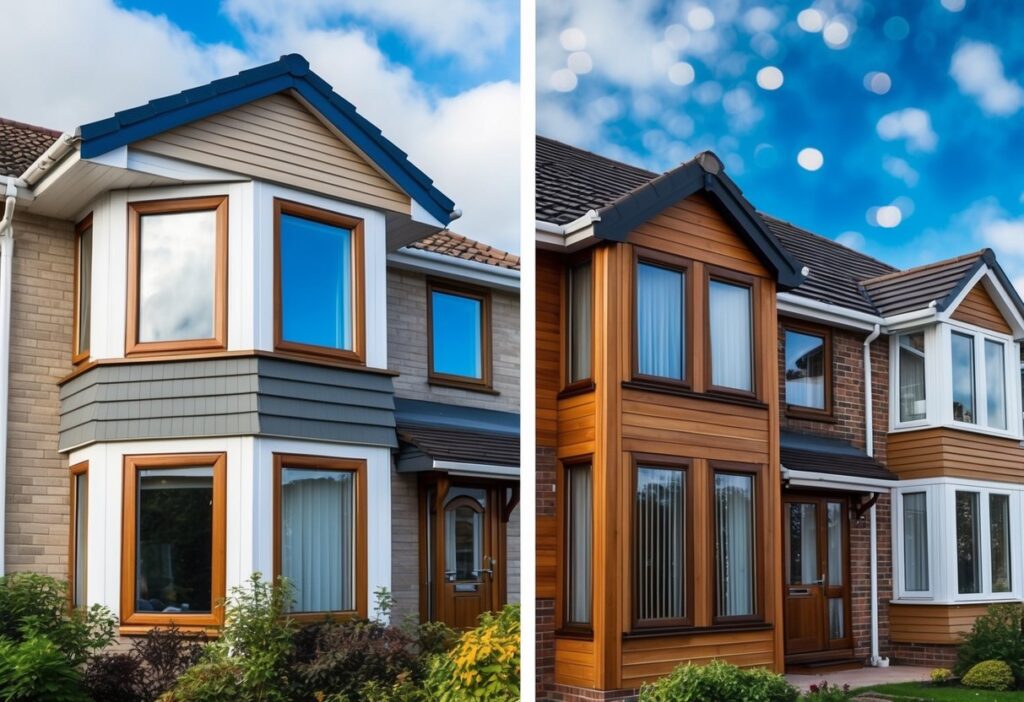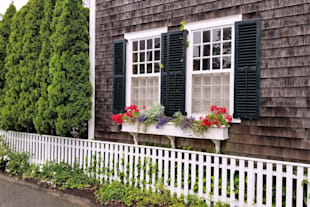The Pros and Cons of uPVC and Wooden Windows: A Comparative Analysis for Homeowners
Choosing new windows for your home is an important decision. Two popular options are uPVC and wooden windows. Each type has its own set of benefits and drawbacks to consider.
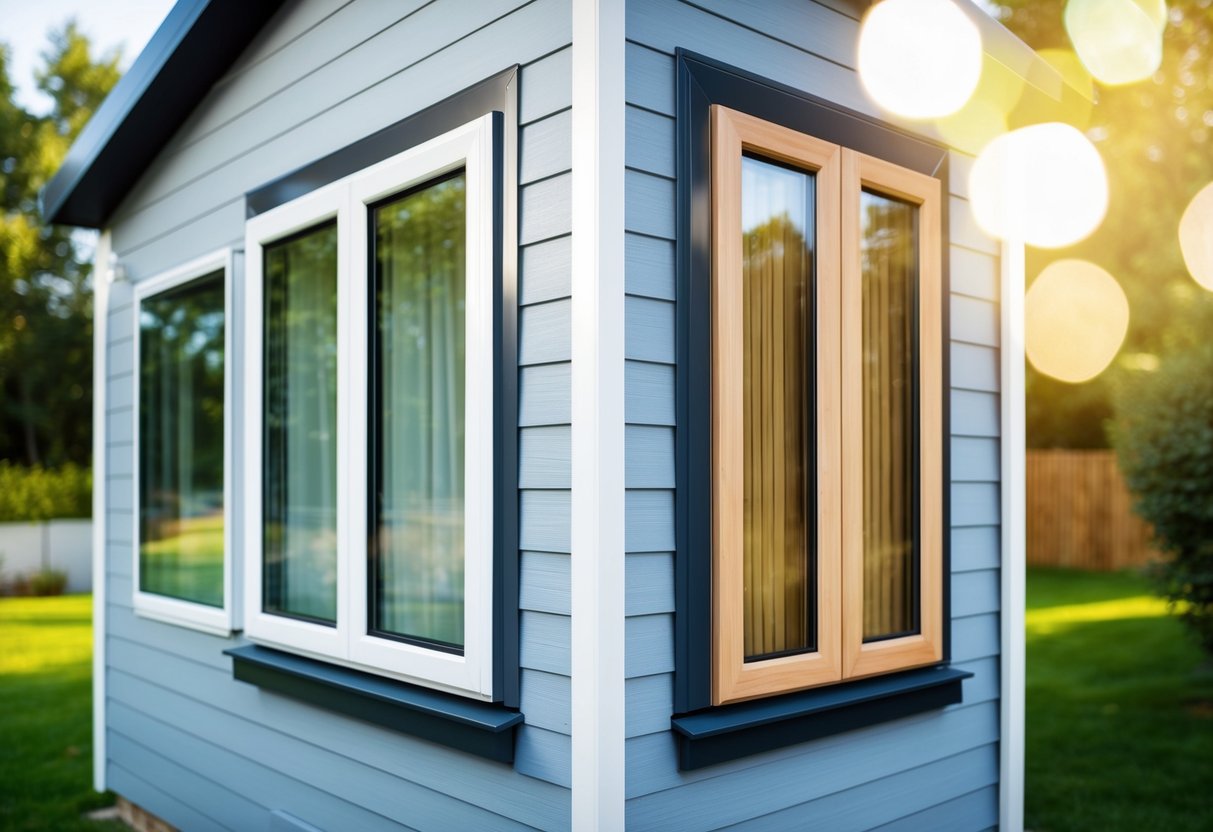
uPVC windows offer affordability, low maintenance, and good durability when properly installed. They are easy to clean and don’t need repainting. Wooden windows, on the other hand, provide a classic, appealing look that many homeowners prefer. They can add charm and value to a property, especially in older or traditional-style homes.
Cost is often a key factor when comparing these window types. uPVC windows tend to be less expensive upfront and cheaper to maintain over time. Wooden windows usually cost more to buy and install, and they require regular upkeep to stay in good condition. Both types can be energy efficient, helping to keep homes warm in winter and cool in summer.
Composition and Characteristics
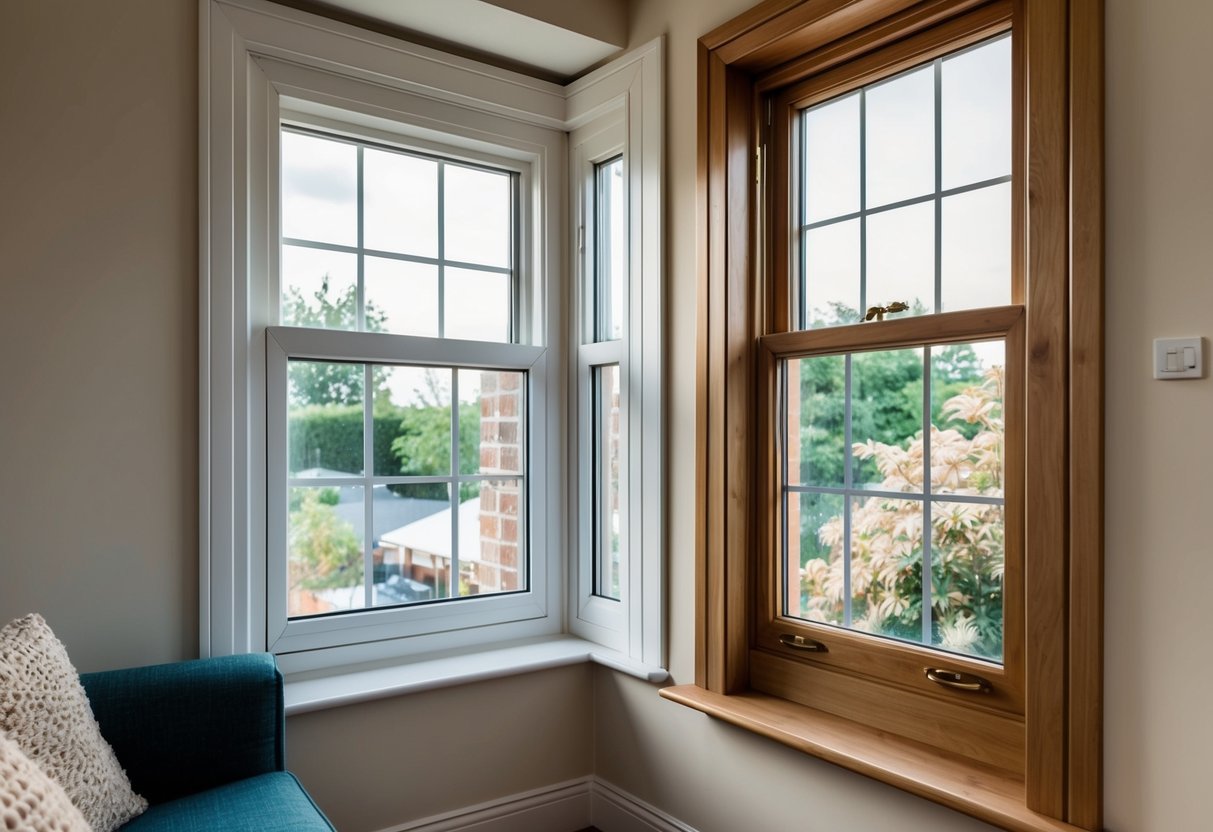
uPVC and wooden windows have distinct material properties that affect their performance and maintenance needs. These differences shape how each type functions in a home.
Material Properties of uPVC
uPVC, or unplasticised polyvinyl chloride, is a rigid plastic used for window frames. It’s lightweight yet strong, with good insulation properties. uPVC windows don’t rot or rust, making them low-maintenance.
These windows resist moisture and don’t swell or shrink with temperature changes. This helps them keep their shape and seal tightly. uPVC is also fire-resistant and doesn’t conduct electricity.
The material can be recycled at the end of its life, though the process is complex. uPVC windows typically last 20-30 years with proper care.
Traits of Wooden Windows
Wooden windows are made from natural timber, often softwoods like pine or hardwoods such as oak. They offer a classic look and feel that many homeowners prefer. Wood is a renewable resource, making these windows more eco-friendly.
Timber frames provide good insulation and can be very energy efficient when properly sealed. They’re also strong and durable, often lasting 60+ years with proper care.
Wood needs regular maintenance to prevent rot and decay. It requires painting or staining every few years. Wooden windows can swell or shrink with moisture changes, which may affect their fit over time.
Some modern wooden windows use treated timbers like Accoya wood. These offer improved durability and reduced maintenance needs compared to traditional wooden frames.
Aesthetic and Design Considerations
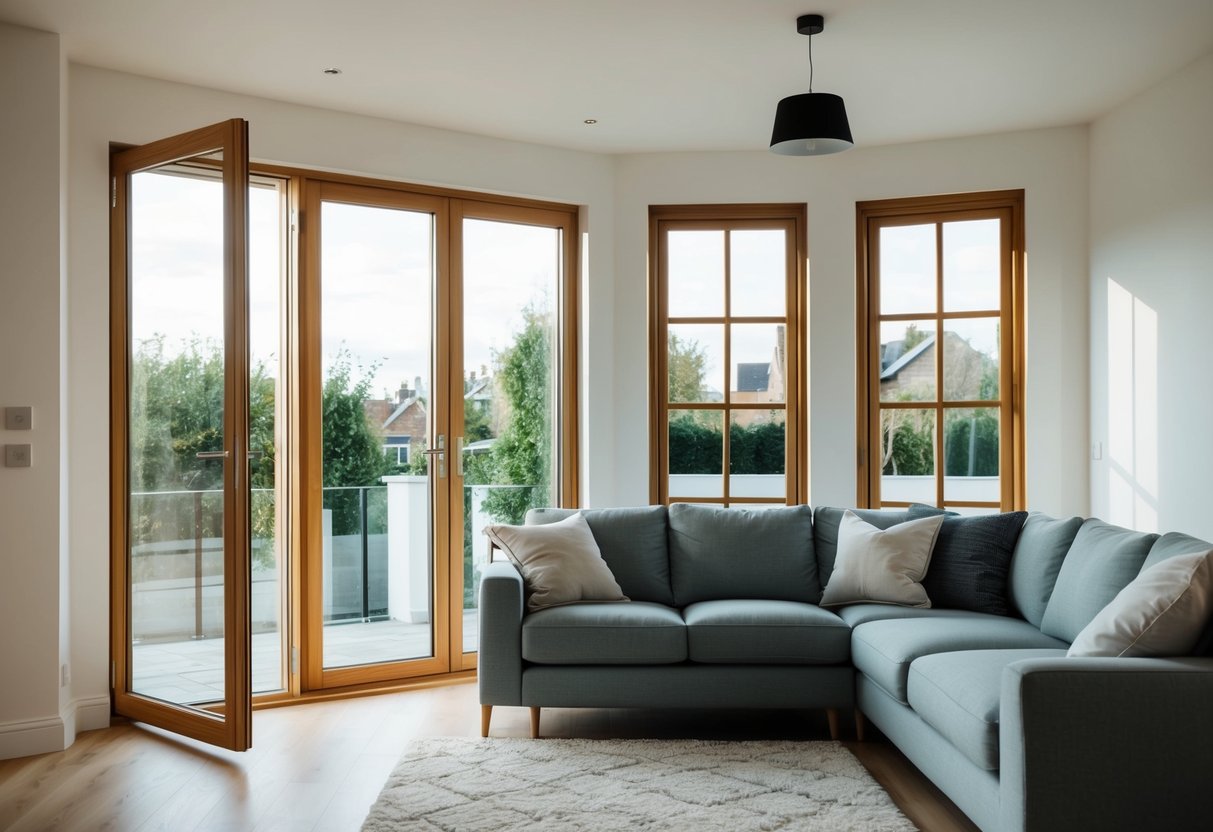
The look of windows greatly affects a home’s appearance. Both uPVC and wooden windows offer unique visual qualities and customisation options. Their suitability for different architectural styles also varies.
Visual Appeal and Customisation
uPVC windows have a modern look. They come in white and wood-grain finishes. Colour options are limited but include popular choices. The plastic frames have a uniform appearance.
Wooden windows provide a classic, natural look. They suit period homes well. Wood can be painted or stained in any colour. This allows for more customisation. Each wooden frame is unique, adding character to a building.
uPVC designs have improved over time. Still, they can’t fully match the charm of timber. For a sleek, low-maintenance option, uPVC works well. For warmth and tradition, wood is hard to beat.
Suitability for Conservation Areas
Conservation areas often have strict rules about window materials and styles. Wooden windows are usually preferred in these areas. They maintain the historic look of buildings.
uPVC windows may not be allowed in conservation areas. Their modern appearance can clash with older architectural styles. Some areas may permit high-quality uPVC that mimics wood.
Timber windows can be made to match original designs closely. This helps preserve the character of historic buildings. Wood is easier to repair and alter to meet conservation guidelines.
For homes not in conservation areas, the choice is more flexible. uPVC can be a good fit for newer builds or less restricted areas. Wooden windows suit a wider range of architectural styles.
Performance and Maintenance
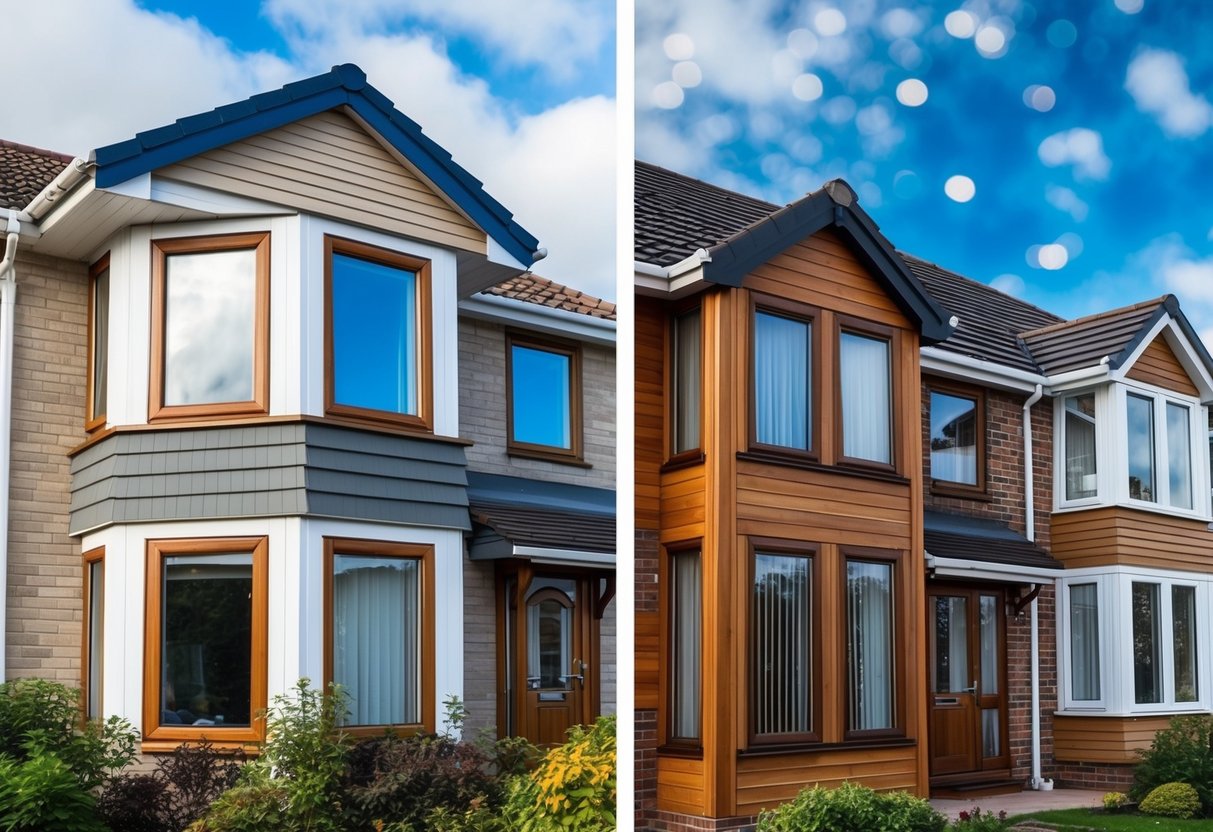
uPVC and wooden windows differ in how they hold up over time and how much care they need. Their energy efficiency also varies, which affects home comfort and costs.
Durability and Maintenance Needs
uPVC windows are tough and need little upkeep. They won’t rot or warp like wood can. A quick wipe with soapy water keeps them clean. They can last 20-30 years with proper care.
Wooden windows need more work to stay in good shape. They need painting or staining every few years to protect against rot and decay. But with regular care, wooden windows can last 60 years or more.
uPVC may fade or discolour over time, especially in strong sunlight. Wood can crack or swell if not treated well. Both types can have issues with seals and hardware as they age.
Insulation and Energy Efficiency
Both uPVC and wooden windows can provide good insulation when fitted properly. uPVC frames have air pockets that trap heat, making them energy-efficient. This can help lower heating bills.
Wooden frames are natural insulators. They can be very energy-efficient when paired with double or triple glazing. Wood’s thermal properties help keep homes warm in winter and cool in summer.
uPVC windows often come with multi-chambered frames for better insulation. Wooden windows can be made more energy-efficient with weatherstripping and proper sealing.
The glass used is just as important as the frame for energy savings. Low-E coatings and argon gas between panes boost thermal efficiency for both types.
Cost Analysis
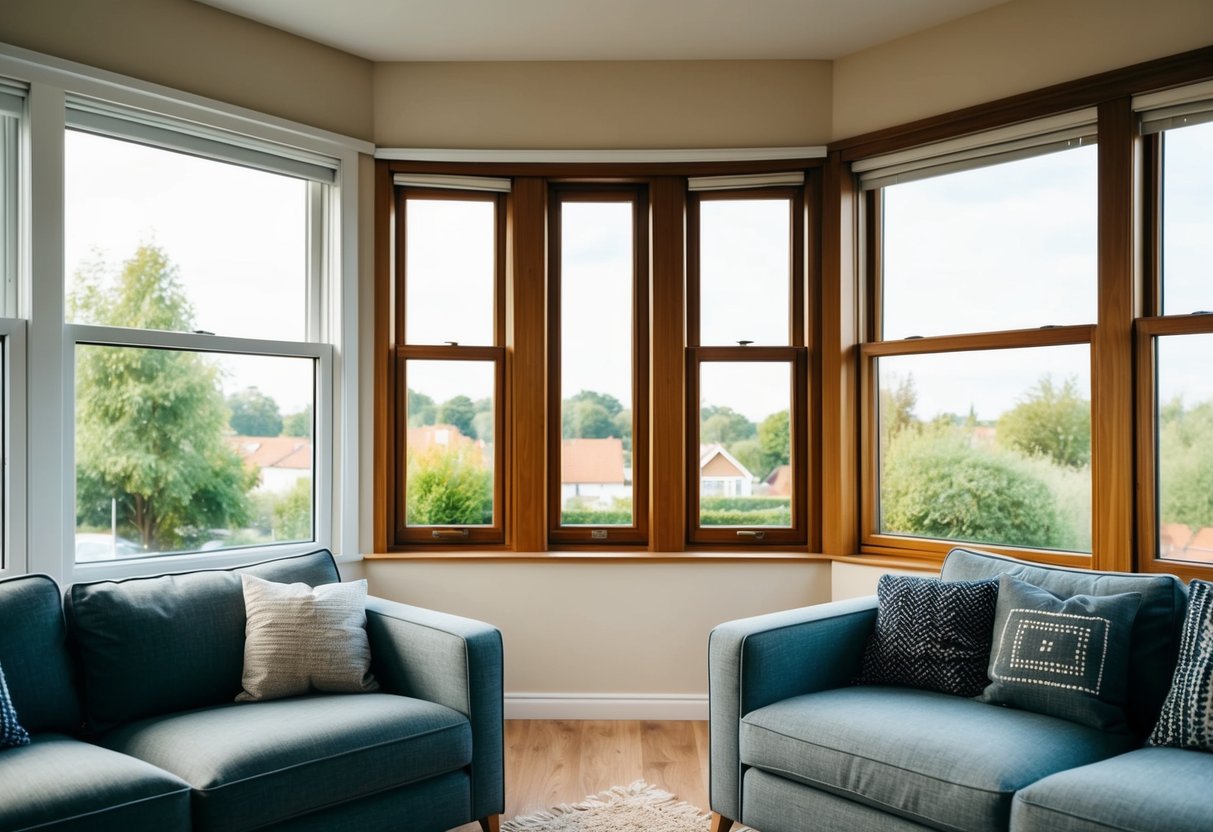
The price and long-term value of uPVC and wooden windows differ significantly. Both initial costs and ongoing expenses play a role in determining the best choice for homeowners.
Price Comparison
uPVC windows are generally more affordable upfront. A standard 600 x 900 mm uPVC frame costs £400-£600, while a wooden frame of the same size ranges from £850-£1,000. For larger 1200 x 1200 mm frames, uPVC prices start around £800, compared to £1,400-£2,000 for wood.
Factors affecting window prices:
- Size and style
- Glass type (double or triple glazing)
- Frame material quality
- Installation complexity
Wood types also impact cost. Softwoods like pine are cheaper than hardwoods such as oak. Modified woods like Accoya fall on the higher end of the price spectrum.
Long-term Value for Money
While uPVC windows have a lower initial cost, wooden windows often provide better value over time. Wood frames can last 60-80 years with proper care, whereas uPVC typically needs replacement after 20-30 years.
Maintenance requirements:
- uPVC: Low-maintenance, occasional cleaning
- Wood: Regular painting or staining every 5-7 years
Energy efficiency is another factor. Well-made wooden windows offer excellent insulation, potentially lowering heating bills. uPVC can also be energy-efficient, but top-quality wood often edges out in performance.
Wooden windows add more value to a property, especially in period homes or conservation areas. This can offset the higher upfront cost when selling.
Environmental Impact and Sustainability
The choice between uPVC and wooden windows has significant implications for the environment. Both materials have different environmental footprints and sustainability profiles that are important to consider.
Eco-Friendliness of Materials
uPVC windows are made from non-renewable petroleum-based resources. Their production releases harmful chemicals and uses a lot of energy. On the plus side, uPVC is very durable and can last for decades with little maintenance.
Wooden windows, especially those made from sustainably sourced timber like Accoya, have a much lower environmental impact. Trees absorb carbon dioxide as they grow, making wood a carbon-negative material. Hardwood windows can be particularly eco-friendly if they come from well-managed forests.
Some wooden windows are treated with chemicals to improve durability. While this extends their lifespan, it can make them less environmentally friendly at the end of their life.
Lifecycle and End-of-life Considerations
uPVC windows can be recycled, but the process is complex and not widely available. Most end up in landfills where they take hundreds of years to break down. This creates long-term environmental issues.
Wooden windows have a big advantage here. They can be easily repaired, refurbished, or recycled. At the end of their life, untreated wood can biodegrade naturally without harming the environment.
The longevity of windows plays a key role in their environmental impact. High-quality wooden windows can last for 60-80 years with proper care. uPVC windows typically last 20-30 years. Longer-lasting products mean less frequent replacement and lower overall resource use.
